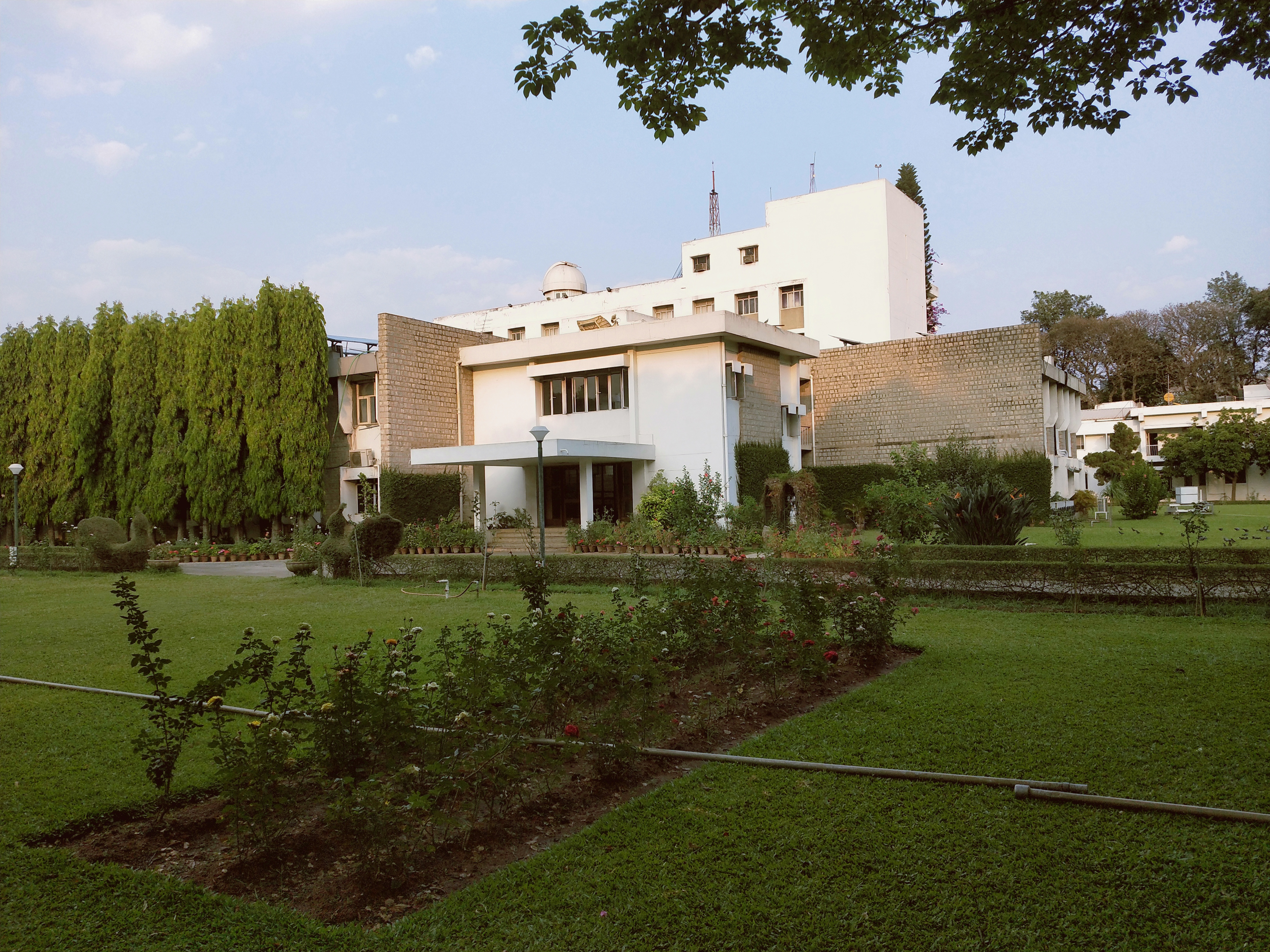|
List Of PSLV Orbital Experiment Module Flights
PSLV Orbital Experiment Module, PSLV Orbital Experiment Module (POEM) also known as PSLV Stage 4 Orbital Platform (PS4-OP) is an orbital micro-gravity test bed based on spent fourth stage of the Indian Space Research Organisation's Polar Satellite Launch Vehicle, PSLV rocket. POEM-1 In June 2022, the PSLV-C53#PSLV Orbital Experimental Module, PSLV-C53/DS-EO campaign had its PS4-OP referred as PSLV Orbital Experiment Module (POEM) and it was first PSLV fourth stage based orbital platform to be actively stabilized using eight Helium based cold gas thrusters after the primary mission and stage passivization. POEM-1 (International Designator, COSPAR ID:2022-072E, Satellite Catalog Number, SATCAT no.:52939) had additional sensors and navigational aids (4 Sun sensors, Magnetometer, MRGPD and NavIC). It generated about 150 watts of power using non-deployable, fixed solar cells wrapped around PS4 tank. Six non-separable payloads facilitated by NewSpace India Limited, NSIL and Indian Nati ... [...More Info...] [...Related Items...] OR: [Wikipedia] [Google] [Baidu] |
PSLV Orbital Experiment Module
PSLV Orbital Experiment Platform (POEM) also known as PSLV Stage 4 Orbital Platform (PS4-OP) is an orbital micro-gravity Testbed, test bed based on spent fourth stage of PSLV. By adding modular subsystems for power generation, communication and stabilization like Solar cell, photovoltaic cells, Telemetry and Telecommand (TT&C) package, attitude control system, data storage etc to the PSLV fourth stage, it can function as a satellite bus. This augmented stage can then host payloads for up to six months while in orbit, making it useful for qualifying components, gaining space heritage and conduct experiments in micro-gravity conditions. Usually the fourth stage of PSLV is discarded after deployment of satellite and remains in orbit for a significant duration in a passive state as a piece of Space debris#Boosters, space debris. Objective POEM or PS4-OP was conceived by Vikram Sarabhai Space Centre, VSSC/ISRO to help Indian academia and start-ups by providing a low cost platform wi ... [...More Info...] [...Related Items...] OR: [Wikipedia] [Google] [Baidu] |
Indian Institute Of Astrophysics
The Indian Institute of Astrophysics (IIA), with its headquarters in Bengaluru, is an autonomous research institute wholly funded by the Department of Science and Technology, Government of India. IIA conducts research primarily in the areas of astronomy, astrophysics and related fields. The institute has a network of laboratories and observatories in India, including Kodaikanal (the Kodaikanal Solar Observatory), Kavalur (the Vainu Bappu Observatory), Gauribidanur (the Gauribidanur Radio Observatory), Hanle (the Indian Astronomical Observatory) and Hosakote. IIA contributed to Astrosat, India's first dedicated multi-wavelength space observatory. The Astrosat project is a collaborative effort of many different research institutions from India. The institute led the development of Ultra-Violet Imaging Telescope (UVIT). Areas of research Researchers at IIA work on a diverse set of topics related to Astronomy and Astrophysics. However, the research can be broadly classifi ... [...More Info...] [...Related Items...] OR: [Wikipedia] [Google] [Baidu] |
PSLV-C60, SpaDEx — Render Of POEM-4
PSLV-C6 was the sixth operational launch and overall ninth mission of the PSLV program. This launch was also the fifty-fourth launch by Indian Space Research Organisation since its first mission on 1 January 1962. The vehicle carried and injected India's two satellites; Cartosat-1 (a.k.a. IRS-P5) and HAMSAT into the Sun-synchronous orbit. PSLV-C6 was launched at 04:44 hours Coordinated Universal Time (10:14 hours Indian Standard Time) on 5 May 2005 from the second launch pad of the Satish Dhawan Space Centre. Mission highlights *Sixth operational launch of the PSLV program. *Overall ninth mission of the PSLV program. *Overall fifty-fourth launch by Indian Space Research Organisation. *First flight to be launched from the second launch pad of Satish Dhawan Space Centre. *Carried and injected two satellites built by ISRO. Mission parameters * Mass: ** ''Total liftoff weight:'' ** ''Payload weight:'' * Overall height: * Propellant: ** ''First stage:'' Solid HTPB based (138.0 + 6 ... [...More Info...] [...Related Items...] OR: [Wikipedia] [Google] [Baidu] |
Vikram Sarabhai Space Centre
The Vikram Sarabhai Space Centre (VSSC) is a major space research centre of the Indian Space Research Organisation (ISRO), focusing on rocket and space vehicles for India's satellite programme. It is located in Thiruvananthapuram, in the Indian state of Kerala. The centre had its beginnings as the Thumba Equatorial Rocket Launching Station (TERLS) in 1962. It was renamed in honour of Vikram Sarabhai, often regarded as the father of the Indian space program. H.G.S. Murthy was appointed as the first director of Thumba Equatorial Rocket Launching Station. The Vikram Sarabhai Space Centre is one of the main and largest research and development establishments within ISRO. VSSC is an entirely indigenous facility working on the development of sounding rockets, the Rohini and Menaka launchers, and SLV, ASLV, PSLV, GSLV and LVM3 families of launch vehicles. History After incorporation of the Indian National Committee for Space Research (INCOSPAR) in 1962, its first act was t ... [...More Info...] [...Related Items...] OR: [Wikipedia] [Google] [Baidu] |
Physical Research Laboratory
The Physical Research Laboratory ( PRL; Hindi: भौतिक अनुसंधान प्रयोगशाला, IAST: ''Bhoutik Anusandhan Prayogashala'') is a National Research Institute for space and allied sciences, supported mainly by the Department of Space, Government of India. This research laboratory has ongoing research programmes in astronomy and astrophysics, atmospheric sciences and aeronomy, planetary and geosciences, Earth sciences, Solar System studies and theoretical physics. It also manages the Udaipur Solar Observatory and Mount Abu InfraRed Observatory. The PRL is located in Ahmedabad. The Physical Research Laboratory was founded on 11 November 1947 by Dr. Vikram Sarabhai. The laboratory had a modest beginning at his residence, with research on cosmic rays. The institute was formally established at the M.G. Science Institute, Ahmedabad, with support from the Karmkshetra Educational Foundation and the Ahmedabad Education Society. Prof. K. R. Rama ... [...More Info...] [...Related Items...] OR: [Wikipedia] [Google] [Baidu] |
Small Satellite
A small satellite, miniaturized satellite, or smallsat is a satellite of low mass and size, usually under . While all such satellites can be referred to as "small", different classifications are used to categorize them based on mass. Satellites can be built small to reduce the large economic cost of launch vehicles and the costs associated with construction. Miniature satellites, especially in large numbers, may be more useful than fewer, larger ones for some purposes – for example, gathering of scientific data and radio relay. Technical challenges in the construction of small satellites may include the lack of sufficient power storage or of room for a propulsion system. Rationales One rationale for miniaturizing satellites is to reduce the cost; heavier satellites require larger rockets with greater thrust that also have greater cost to finance. In contrast, smaller and lighter satellites require smaller and cheaper launch vehicles and can sometimes be launched in mult ... [...More Info...] [...Related Items...] OR: [Wikipedia] [Google] [Baidu] |
L B S Institute Of Technology For Women
Lal Bahadur Shastri Institute of Technology for Women (LBSITW), Thiruvananthapuram, is the first engineering college for women in the state of Kerala on the Malabar Coast of southwestern India. This is the second engineering college managed by the LBS Centre for Science and Technology, Thiruvananthapuram, Kerala the other being LBS College of Engineering, Kasargod. LBSITW is the only engineering college for women in the Government sector in the state of Kerala. The center is administered by a governing body and an executive committee. The Honorable Chief Minister is the Chairman of the governing body and the Honorable Minister of Education is the Vice-Chairman. The institution was inaugurated on 30 Oct 2001. Approved by the AICTE and affiliated to the APJ Abdul Kalam Technological University APJ Abdul Kalam Technological University (KTU) is a state public technological university headquartered at Thiruvananthapuram, Kerala, India. KTU is an All India Council for Technica ... [...More Info...] [...Related Items...] OR: [Wikipedia] [Google] [Baidu] |
IN-SPACe
Indian National Space Promotion and Authorisation Centre (IN–SPACe) is a single-window autonomous agency under the Department of Space of the Government of India. The establishment of IN–SPACe was announced in June 2020 by the Minister of State for Space Jitendra Singh, with the Union Cabinet approving its creation. In the same month Secretary (Space) and chairperson of the Indian Space Research Organisation, K. Sivan, said that it would take up to sixmonths to operationalize IN–SPACe, with the Department of Space handling its functions in the meantime. History Space programme in India has been developed over a period of more than five decades with a strong focus on application driven programmes and bringing space to the services of the common man. In the process, it has become one of the six largest space agencies in the world. The Indian Space Research Organisation (ISRO) maintains one of the largest fleets of GEO communication and LEO remote sensing satellites, th ... [...More Info...] [...Related Items...] OR: [Wikipedia] [Google] [Baidu] |
Atmospheric Entry
Atmospheric entry (sometimes listed as Vimpact or Ventry) is the movement of an object from outer space into and through the gases of an atmosphere of a planet, dwarf planet, or natural satellite. Atmospheric entry may be ''uncontrolled entry,'' as in the entry of astronomical objects, space debris, or bolides. It may be ''controlled entry'' (or ''reentry'') of a spacecraft that can be navigated or follow a predetermined course. Methods for controlled atmospheric ''entry, descent, and landing'' of spacecraft are collectively termed as ''EDL''. Objects entering an atmosphere experience atmospheric drag, which puts mechanical stress on the object, and aerodynamic heating—caused mostly by compression of the air in front of the object, but also by drag. These forces can cause loss of mass ( ablation) or even complete disintegration of smaller objects, and objects with lower compressive strength can explode. Objects have reentered with speeds ranging from 7.8 km/s for ... [...More Info...] [...Related Items...] OR: [Wikipedia] [Google] [Baidu] |
XPoSat
The X-ray Polarimeter Satellite (XPoSat) is an Indian Space Research Organisation (ISRO)-manufactured space observatory to study polarisation of cosmic X-rays. It was launched on 1 January 2024 on a PSLV rocket, and it has an expected operational lifespan of at least five years. The telescope was developed by the Raman Research Institute (RRI) in close collaboration with the U R Rao Satellite Centre (URSC). Per ISRO, this mission will complement the efforts of US space agency NASA, which launched its Imaging X-ray Polarimetry Explorer (IXPE) in 2021 by observing space events across a broad energy range of 2–30 keV. Overview Studying how radiation is polarised gives away the nature of its source, including the strength and distribution of its magnetic fields and the nature of other radiation around it. XPoSat will study the 50 locally brightest (known) sources in the universe consisting of, variously, pulsars, black hole X-ray binaries, active galactic nuclei, neutr ... [...More Info...] [...Related Items...] OR: [Wikipedia] [Google] [Baidu] |
PSLV-C58
The PSLV C-58 was the 60th flight of the Indian Space Research Organisation's Polar Satellite launch Vehicle. It carried the XPoSAT mission along with rideshare payloads. Payload Besides XPoSat, the rocket carried 10 other payloads on PSLV Orbital Experiment Module (POEM) - 3. Alongside them, two payloads by Indian Space Research Organisation's (ISRO) Vikram Sarabhai Space Centre (VSSC) and one by the Physical Research Laboratory (PRL) were manifested for the flight. On PSLV-C58/XPoSat campaign, POEM-3 hosted ten payloads weighing ~145 kg cumulatively. PSLV fourth stage was lowered to 350 km orbit at 9.6° inclination after deploying XPoSat to reach the POEM-3 operational orbit. For power generation and storage it will again have flexible solar panels in conjunction with 50Ah Li-Ion battery and will be three-axis stabilized. Payloads hosted on POEM-3 are following, seven of them facilitated by IN-SPACe and three are by ISRO, # Radiation Shielding Experimental Mo ... [...More Info...] [...Related Items...] OR: [Wikipedia] [Google] [Baidu] |





